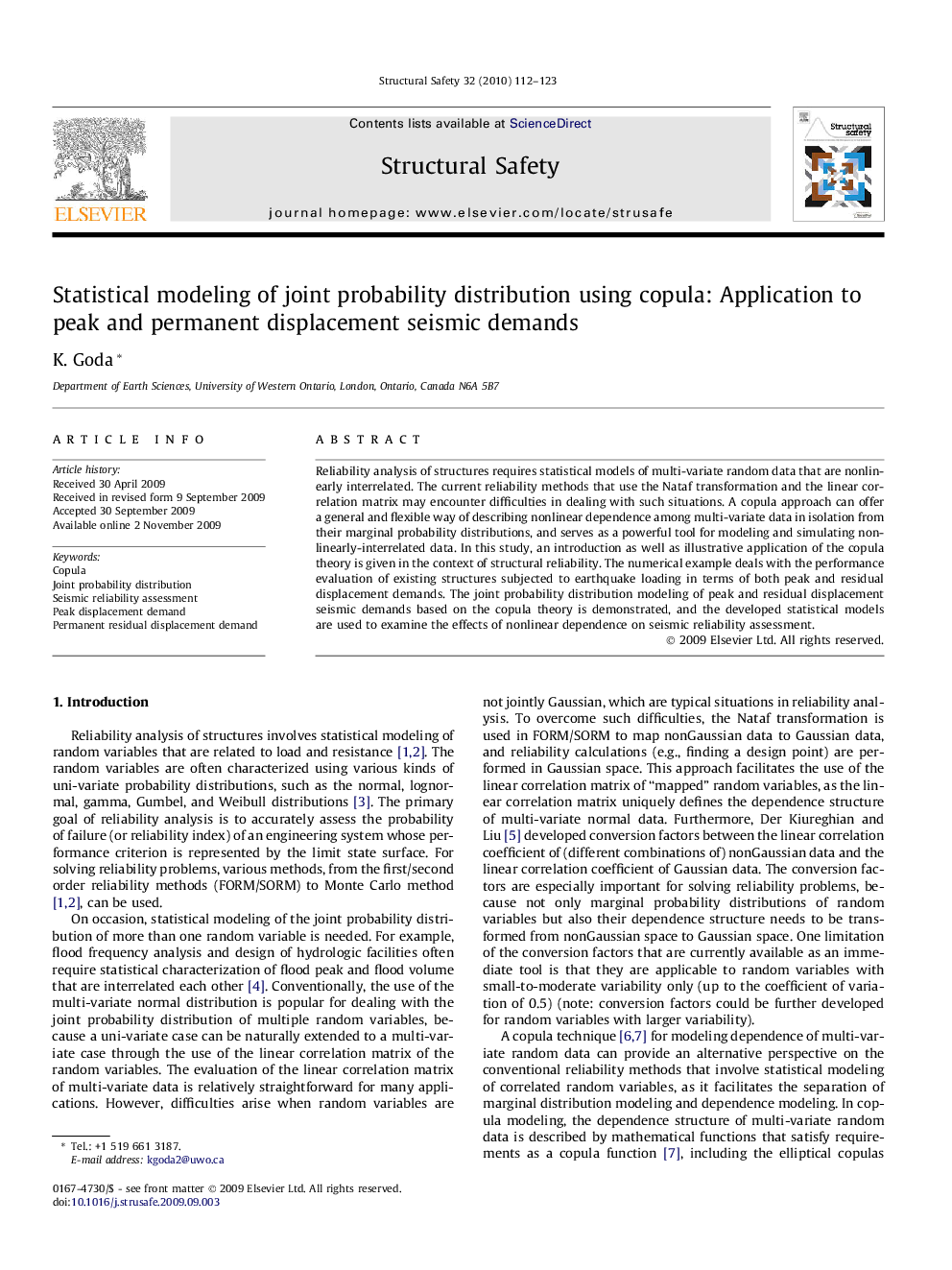| Article ID | Journal | Published Year | Pages | File Type |
|---|---|---|---|---|
| 307686 | Structural Safety | 2010 | 12 Pages |
Reliability analysis of structures requires statistical models of multi-variate random data that are nonlinearly interrelated. The current reliability methods that use the Nataf transformation and the linear correlation matrix may encounter difficulties in dealing with such situations. A copula approach can offer a general and flexible way of describing nonlinear dependence among multi-variate data in isolation from their marginal probability distributions, and serves as a powerful tool for modeling and simulating nonlinearly-interrelated data. In this study, an introduction as well as illustrative application of the copula theory is given in the context of structural reliability. The numerical example deals with the performance evaluation of existing structures subjected to earthquake loading in terms of both peak and residual displacement demands. The joint probability distribution modeling of peak and residual displacement seismic demands based on the copula theory is demonstrated, and the developed statistical models are used to examine the effects of nonlinear dependence on seismic reliability assessment.
